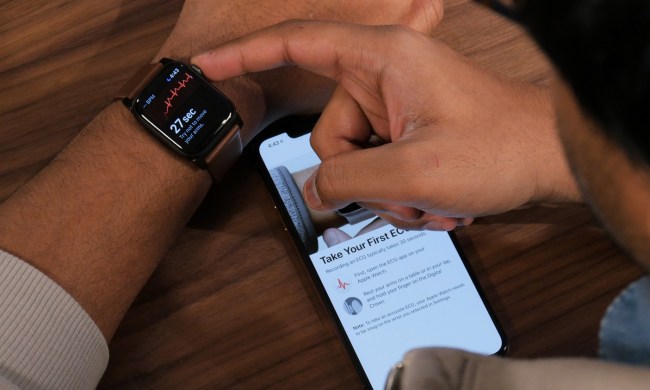During World War I and World War II, in an effort to stem the rising tide of food shortages and provide work for millions of unemployed citizens, the Allied Nations ran a series of campaigns that encouraged people to grow their own fruit, vegetables, and herbs in so-called “victory gardens.” Posters and advertisements depicted doing so as a highly patriotic act, and a way for individuals to contribute to the war effort from home.
Today, we find ourselves in yet another war, only this time we’re fighting an invisible enemy called COVID-19, a disease that’s attacking every country on the planet all at once. Instead of food shortages, we’re running out of personal protective equipment (PPE) for health care workers. For this reason, it’s time to reboot the victory gardens concept for the 21st century. Thanks to the advent of additive manufacturing tech, individual citizens now have the means to fabricate masks, face shields, and ventilator valves from inside the very homes they’ve been quarantined in.
It’s time to band together and 3D print for victory.

The revolution will be 3D printed
Almost as soon as the virus began to overwhelm hospitals, people started mobilizing on the internet. Sewing patterns for masks started circulating among crafters. STL files for face shields started popping up on 3D printing sites. People created Facebook groups to organize their efforts. Within days, collection and distribution networks started to take shape.
“We’ve got 4,000 volunteers, and we’re operating on six continents and hundreds of cities around the world.” said Chad Loder, who along with Rachel Smith, co-founded the new Masks 4 Docs Foundation.
“You can get started right away, and we can help connect you with the resources and the supplies so that you can 3D-print face shields,” Loder told Digital Trends.
Already, designs for 3D-printed personal protective gear have been released, remixed, and refined by a giant network of online collaborators. The schematics for one popular face shield component, originally released online in late March, is already in its third iteration. The new-and-improved version uses less material, prints faster, and can be manufactured in stacks of four at a time.
Another design, which has already been reviewed and approved for clinical use by the National Institutes of Health (NIH), can be printed in under an hour. And those are only just the two most popular examples. Right now, there are thousands of coronavirus-related 3D-printable objects (including ones for ventilator splitters, hands-free doorknob openers, and more) floating around on the web, ready to be downloaded and printed.
“Now, more so than ever before, we have the power to harness distributed fabrication, and get tens of thousands of 3D printers across the globe working toward making essential protection gear for our heroes on the health care front lines.” said Joel Telling, a YouTuber and prominent figure in the 3D-printing community.
The groundwork has already been laid for us. The next step is ramping up production.

The United Printers of America
By most estimates, the worst is yet to come for the United States. Our attempts to flatten the curve are helping, but the rapid spike in COVID-19 cases across the country has led to extreme shortages in PPE at most hospitals, and as the cases ramp up in the coming weeks, the magnitude of those shortages will likely increase.
Some large companies have stepped up to help. General Electric, Ford, and 3M have joined forces to convert certain factories into ad hoc respirator production plants. Elon Musk has pledged to do the same with his Tesla factories. The U.S. government has even invoked the Defense Production Act to force more private-sector companies to produce PPE, but unfortunately it hasn’t followed through and exercised those powers in full, so medical equipment shortages remain the norm. Health care workers are still risking their lives and wearing bandannas over their faces, or in some cases going without masks entirely, leaving them vulnerable to coronavirus infection.
“Once frontline health care workers and the doctors start to go down, you can’t really replace them that easily.” says Loder. “You can always make new fighter planes, but you can’t make new pilots, right? So as they start to go down, that puts pressure on the remaining staff to work even longer hours, and then those workers start to get sick, and we just get this spiral and cascade. So, it’s important that we get the PPE — the masks, the face shields, the suits, the gloves, all that stuff — directly into the hands of the doctors, nurses, and first responders on the front lines of coronavirus.
For this reason, it’s time for us individual citizens to step up. Now more than ever, the means of production are in our hands. We have sewing machines, 3D printers, and robust shipping networks that allow us to get nearly anything delivered to (or from) our doorsteps in a matter of days. And though none of us will likely make a dent in the PPE shortage by ourselves, if we all work together, we can effectively become a giant, distributed factory — one big enough to make a considerable difference. There are millions of consumer/hobbyist 3D printers in the United States alone, and tens of millions of sewing machines. If just a fraction of those were put to use for creating masks and face shields, we could end shortages in a hurry.
This will only work if we all get involved. So with that in mind, we’ve compiled a list of resources below for anyone interested in making PPE at home. This list includes links to sewing patterns and instructions for masks, links to 3D models and printing information for masks and face shields, and information on how to safely ship the things you create to hospitals.
Do your part. Print for victory!

Print for victory
Sewing
- If you’re looking for general-purpose information on how to create your own cloth face masks, the Center for Disease Control and Prevention’s guidelines are a great place to start.
- For more detailed how-to instructions, we highly recommend checking out Masks4All.
- Finally, the folks at Joann Fabrics have compiled a bunch of great resources for making and sewing your own masks at home.
3D printing
- If you want to start 3D-printing face shields en masse, we recommend checking out this design from Prusa Research.
- Another good design (which has been approved for clinical use by the NIH) is this one from 3DVerkstan.
- Finally, the NIH has an entire library of other 3D printable objects you can make at home with a basic 3D printer.
Crafting (no printer or sewing machine necessary)
Even if you don’t have a the means to sew or 3D print, you can use this open-source visor design to create one using nothing but foam, plastic, and some glue.
Shipping and distribution
To get guidance on where to send the PPE you build, how to do it safely, and just general information, we recommend visiting Masks4Docs.
If you have any suggestions for things we should add to this list, drop the author a note on Twitter!
For the latest updates on the novel coronavirus outbreak, visit the World Health Organization’s COVID-19 page.



